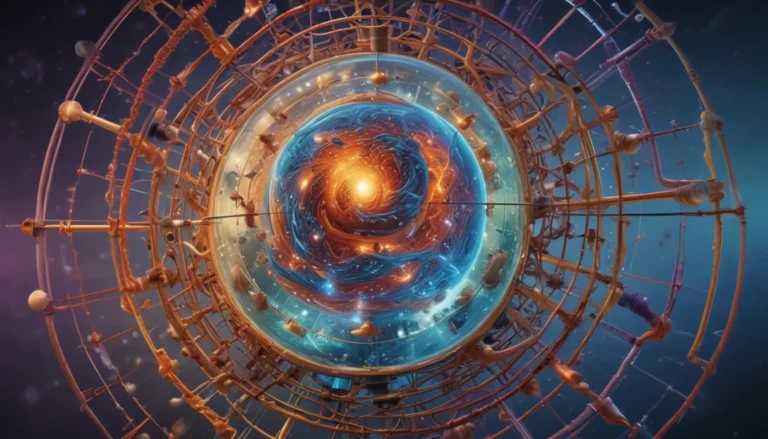A Note About Images: The images used in our articles are for illustration purposes only and may not exactly match the content. They are meant to engage readers, but the text should be relied upon for accurate information.
Momentum is a fundamental concept in physics that characterizes the motion of an object. It is defined as the product of an object’s mass and velocity and is crucial in understanding how objects interact and move in the world around us. The principle of momentum conservation states that the total momentum of a closed system remains constant, provided no external forces act on it. This law plays a vital role in various phenomena, from collisions between billiard balls to the motion of celestial bodies in space. By studying the conservation of momentum, scientists and engineers can predict the outcomes of interactions between objects and design systems that efficiently utilize this fundamental principle.
The Legacy of Johannes Kepler
Johannes Kepler, a pioneering astronomer and mathematician, made significant contributions to our understanding of planetary motion. Kepler’s laws of planetary motion, formulated in the early 17th century, revolutionized the field of astronomy and laid the groundwork for the later development of Newton’s laws of motion. Kepler’s three laws describe the elliptical paths of planets around the Sun, the equal areas swept out by a planet in equal times, and the relationship between a planet’s orbital period and its average distance from the Sun. By studying Kepler’s laws, scientists gained valuable insights into the dynamics of our solar system and the principles governing the motion of celestial objects.
The Fundamental Concept of Force
Force is a central concept in Newton’s laws of motion, representing the interaction between objects that causes them to accelerate. According to Newton’s second law, the acceleration of an object is directly proportional to the net force acting on it and inversely proportional to its mass. This relationship highlights the crucial role that force plays in determining how objects respond to external influences and move through space. By understanding the concept of force, scientists and engineers can design systems that optimize performance, ensure safety, and achieve desired outcomes in a wide range of applications, from transportation to robotics.
FAQs
Q: What is momentum, and why is it important in physics?
A: Momentum is the product of an object’s mass and velocity, representing its motion. Momentum is essential in understanding how objects interact and move, as it plays a key role in determining the outcomes of collisions and interactions between objects.
Q: How does the conservation of momentum apply to real-life scenarios?
A: The conservation of momentum states that the total momentum of a closed system remains constant. This principle can be observed in various situations, such as collisions between objects, where the total momentum before and after the collision remains the same, providing valuable insights into the behavior of objects in motion.
Q: What were Johannes Kepler’s contributions to our understanding of planetary motion?
A: Johannes Kepler formulated three laws of planetary motion that describe the orbital dynamics of planets around the Sun. Kepler’s laws provided a new framework for explaining the motion of celestial bodies and paved the way for future advancements in astronomy and physics.
Q: How does force influence the motion of objects?
A: Force represents the interaction between objects that causes them to accelerate. Newton’s second law states that the acceleration of an object is directly proportional to the net force applied to it. By understanding the concept of force, scientists and engineers can predict and control the motion of objects in various contexts.
Q: What practical applications do Newton’s laws of motion have in the field of engineering?
A: Newton’s laws of motion are essential in engineering for analyzing and predicting the behavior of mechanical systems. By applying these laws, engineers can design structures, machines, and vehicles that efficiently utilize the principles of motion to achieve desired outcomes and ensure safety.
Conclusion
In conclusion, the world of physics is filled with fascinating concepts that shape our understanding of motion and the interactions between objects in the universe. From the conservation of momentum to Kepler’s laws of planetary motion and the fundamental concept of force, these principles guide scientific exploration and technological advancements. By exploring these concepts, we gain valuable insights into the fundamental laws that govern the dynamics of our world and the broader universe.
As we continue to unravel the mysteries of physics and expand our knowledge of the natural world, let us appreciate the profound impact of these fundamental principles on our understanding of motion and the forces that shape our reality. Embrace the wonder of science and the power of curiosity as we journey through the captivating realm of physics and explore the laws that govern the cosmos.
Was this page helpful?
Our commitment to delivering trustworthy and engaging content is at the heart of what we do. Each fact on our site is contributed by real users like you, bringing a wealth of diverse insights and information. To ensure the highest standards of accuracy and reliability, our dedicated editors meticulously review each submission. This process guarantees that the facts we share are not only fascinating but also credible. Trust in our commitment to quality and authenticity as you explore and learn with us.






